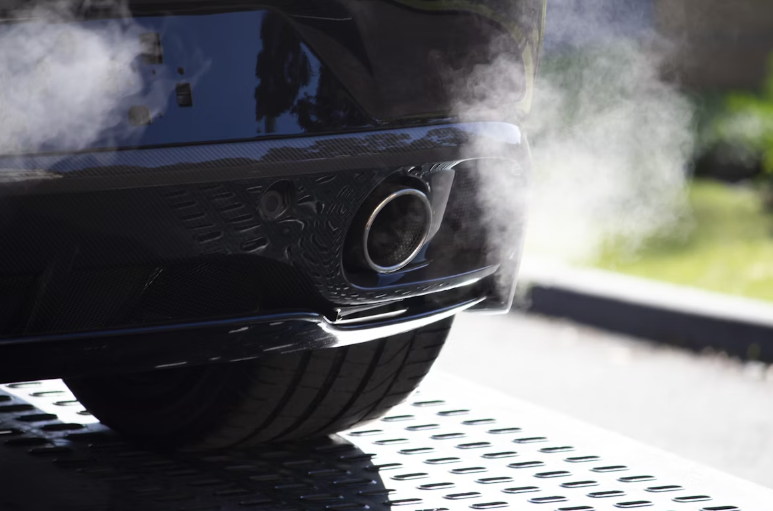Introduction
If you've owned a vehicle for any length of time, chances are you've seen a puff of smoke coming from the exhaust. Sometimes it's harmless, but other times it could be your car’s way of telling you something isn't right. Smoke color is one of those clues that can help you figure out what might be going on under the hood. Different colors can point to different issues, some small and fixable, others more serious.
Recognizing these signs early on can help you avoid expensive problems later. This is even more true for pre-owned cars, where regular wear from a previous owner might be hidden beneath the surface. If you're cruising the roads in Saluda and notice odd smoke from your car’s tailpipe, it helps to know what that color might mean and when to have an expert take a look.
Understanding White Smoke from the Exhaust
White smoke is one of the more common forms of exhaust you'll see, especially early in the morning. Most of the time, it's just water vapor burning off due to condensation. This usually clears up in a few minutes and isn’t something to worry about.
But if that white smoke keeps coming or gets thick and heavy, that could be a different story. Some common reasons behind white smoke include:
- A leaking head gasket letting coolant leak into the combustion chamber
- A cracked engine block or cylinder head
- Coolant being burned inside the engine
When coolant finds its way into places it doesn’t belong, burn-off creates thick white smoke. You’ll usually pick up on a sweet smell in the air too, which is a clue that antifreeze might be part of the issue. Your engine might run hot, your performance might suffer, and your coolant levels may mysteriously keep dropping.
If you've recently purchased a pre-owned car or plan to, it’s smart to pay close attention to white smoke during a cold start. If it doesn’t clear up fast, it’s time to have it checked out. Ignoring it can lead to serious engine wear and costly repair bills.
What Black Exhaust Smoke Might Be Telling You
Black smoke is often a sign of too much fuel getting burned. This usually means the fuel-air mixture is out of balance. When there’s more fuel than the engine can burn off properly, that extra fuel exits as smoke.
Here are some common reasons for black smoke:
- Clogged or dirty air filter
- Faulty fuel injectors
- Malfunctioning fuel pressure regulator
- Bad sensors or computer issues controlling the fuel system
When an air filter is clogged, it reduces the amount of air that reaches the engine. That leads to a richer fuel mixture, where more fuel gets burned than necessary. If your gas mileage has dropped or you can smell fuel while driving, it may be time to get things looked at.
You might also notice a few other signs like weaker acceleration or the engine shaking slightly while idling. If you’re driving through Saluda and spotting a trail of thick black smoke behind you, it's time to visit a mechanic. Putting it off can hurt the emissions system and lead to bigger problems.
Sometimes, a simple air filter swap can help. Other times, real issues within the engine or sensors may be at play. In any case, don’t wait too long. Catching it early can save you from more shopping trips to the repair shop later
What Blue Smoke From the Exhaust Reveals
Blue smoke isn’t as common, but it’s one of the most telling signs of engine trouble. If you’re seeing blue smoke come from your exhaust pipe, there’s a good chance your engine is burning oil. This tends to happen during acceleration or right after idling for a bit.
Common causes of blue smoke include:
- Worn piston rings letting oil slip into the combustion chambers
- Damaged or dried-out valve seals leaking oil
- PCV (positive crankcase ventilation) system problems allowing pressure imbalance
When oil burns inside the engine, it doesn’t just cause smoke. It can also leave behind residue that harms spark plugs, affects how smoothly the engine runs, and brings down fuel efficiency. Over time, it can turn into a larger repair job.
One of our local drivers here in Saluda noticed blue smoke just as he was going uphill every day. It turned out his valve guides had aged and started to leak slightly, but only when the car shifted at a certain angle. If he hadn't noticed the smoke, he could've run into major engine issues that might have been avoided.
If your car’s blowing blue smoke, stop pushing it hard and get a proper inspection lined up right away. The longer oil burns in the wrong spot, the more damage it does.
Gray Smoke and Hidden Mechanical Problems
Gray smoke is a bit trickier than others. It’s not as easy to identify, since it doesn't always come with clear symptoms. While black points to fuel and blue points to oil, gray could be a mix of things.
Some common reasons gray smoke shows up are:
- Transmission fluid leak being burned due to a vacuum modulator issue
- A failing turbocharger leaking oil or air
- A stuck PCV valve creating improper pressure and vapor routing
That transmission fluid issue tends to smell a little odd, almost burnt, and might only show up when shifting gears. Turbocharger problems might also come with whining noises under the hood or loss of power.
Regardless of the cause, gray smoke should never be written off. It’s often connected to parts most drivers never see, and fixing those parts can get pricey. The earlier it’s spotted, the better your chances of fixing the problem without a full overhaul.
If you’re checking out pre-owned cars for sale in Saluda, ask to take the car for a drive and keep an eye on smoke during heavy acceleration or cold starts. Subtle signs now can help you avoid surprises after you buy.
Keeping an Eye Out for your Car’s Well-Being
Smoke from the exhaust isn’t just something to wave off—it’s a built-in warning system from your car. Each color tells a different story, whether it’s coolant mixing in where it shouldn’t be, oil sneaking into the combustion chamber, or fuel not burning the right way.
Understanding what each smoke color means helps you act early and limit long-term damage. This is especially important when you're deciding on a used car or have recently bought one. Knowing what to look for lets you step in before problems grow.
When you're driving through Saluda in a vehicle that's logged some miles, it pays to check now and then for signs like odd-colored smoke, weird engine smells, or sounds that weren’t there before. These little indicators can be the key to spotting issues before they turn into big ones.
A well-maintained vehicle doesn’t just offer a smoother ride, it gives you fewer problems and stronger peace of mind down the road. Whether it’s time for your next inspection or you're narrowing down options for your next ride, remember what your exhaust could be trying to tell you.
Stay ahead of potential car troubles by understanding what smoke colors mean for your vehicle. If you're looking for peace of mind behind the wheel, take a look at our selection of pre-owned cars for sale at United Auto Sales Saluda. We'll help you find a ride that fits your lifestyle and keeps you confident on the roads of Saluda.



